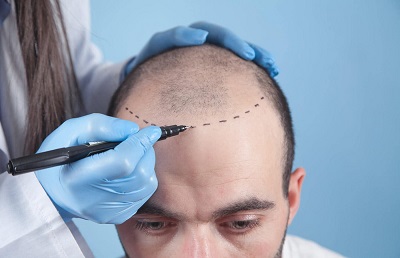Hair transplant in Abu Dhabi is a significant step towards restoring hair growth and regaining confidence for individuals experiencing hair loss. Understanding what to expect before, during, and after the procedure can help you prepare both mentally and physically for the journey ahead. In this guide, we'll walk you through the process of hair transplant surgery and provide insights into each stage of the experience.
Before Hair Transplant Surgery
Consultation with a Hair Transplant Surgeon
Before undergoing hair transplant surgery, you'll typically have a consultation with a hair transplant surgeon. During this consultation, the surgeon will:
- Evaluate your hair loss pattern and discuss your goals and expectations.
- Assess the donor areas of your scalp to determine suitability for transplantation.
- Explain the hair transplant procedure, including the chosen technique (FUT or FUE) and potential outcomes.
- Address any questions or concerns you may have about the surgery.
Preparing for Surgery
Leading up to the surgery date, your surgeon may provide specific instructions to follow, which may include:
- Avoiding medications or supplements that can increase bleeding risk.
- Refraining from smoking, as it can impair healing and increase the risk of complications.
- Arranging for transportation to and from the surgical facility on the day of surgery.
During Hair Transplant Surgery
Anesthesia and Donor Area Preparation
On the day of surgery, you'll arrive at the surgical facility, where the following steps will occur:
- Local anesthesia will be administered to numb both the donor and recipient areas of the scalp.
- If undergoing FUT, a strip of scalp containing hair follicles will be surgically removed from the donor area.
- If undergoing FUE, individual follicular units will be extracted from the donor area using a small punch tool.
Recipient Site Preparation and Follicle Transplantation
Once the donor hair follicles are harvested, the surgical team will:
- Create tiny incisions in the recipient area of the scalp, where the hair will be transplanted.
- Carefully transplant the harvested follicles into the recipient incisions, following the natural hairline and pattern for a seamless result.
After Hair Transplant Surgery
Immediate Post-Operative Care
After hair transplant surgery, you'll receive instructions for immediate post-operative care, which may include:
- Taking prescribed medications to prevent infection and manage discomfort.
- Keeping the scalp clean and dry to promote healing.
- Avoiding strenuous activities and exposure to direct sunlight to minimize the risk of complications.
Recovery and Follow-Up
In the days and weeks following surgery, you can expect:
- Swelling, redness, and mild discomfort in the treated areas, which typically subside within a few days.
- Follow-up appointments with your surgeon to monitor healing progress and address any concerns or questions you may have.
Hair Growth and Results
Over the coming months, you'll begin to notice:
- Gradual hair growth in the transplanted areas as the hair follicles enter the growth phase.
- Improved hair density and coverage, with full results typically visible within 6 to 12 months post-surgery.
Conclusion
Hair transplant surgery offers a transformative solution for individuals experiencing hair loss, providing natural-looking results and renewed confidence. By understanding what to expect before, during, and after the procedure, you can approach the journey with confidence and embark on the path to hair restoration with clarity and optimism.





Comments